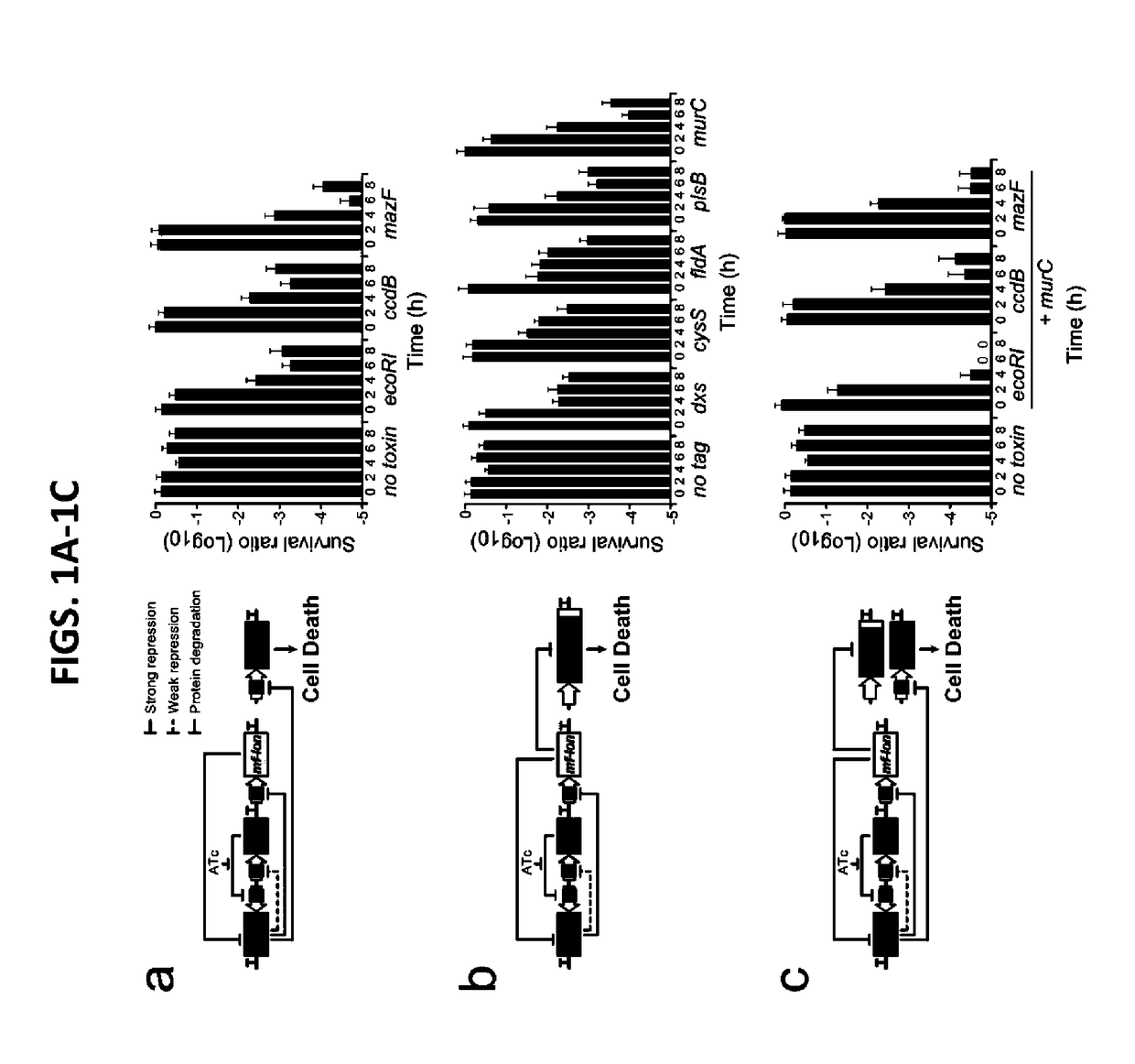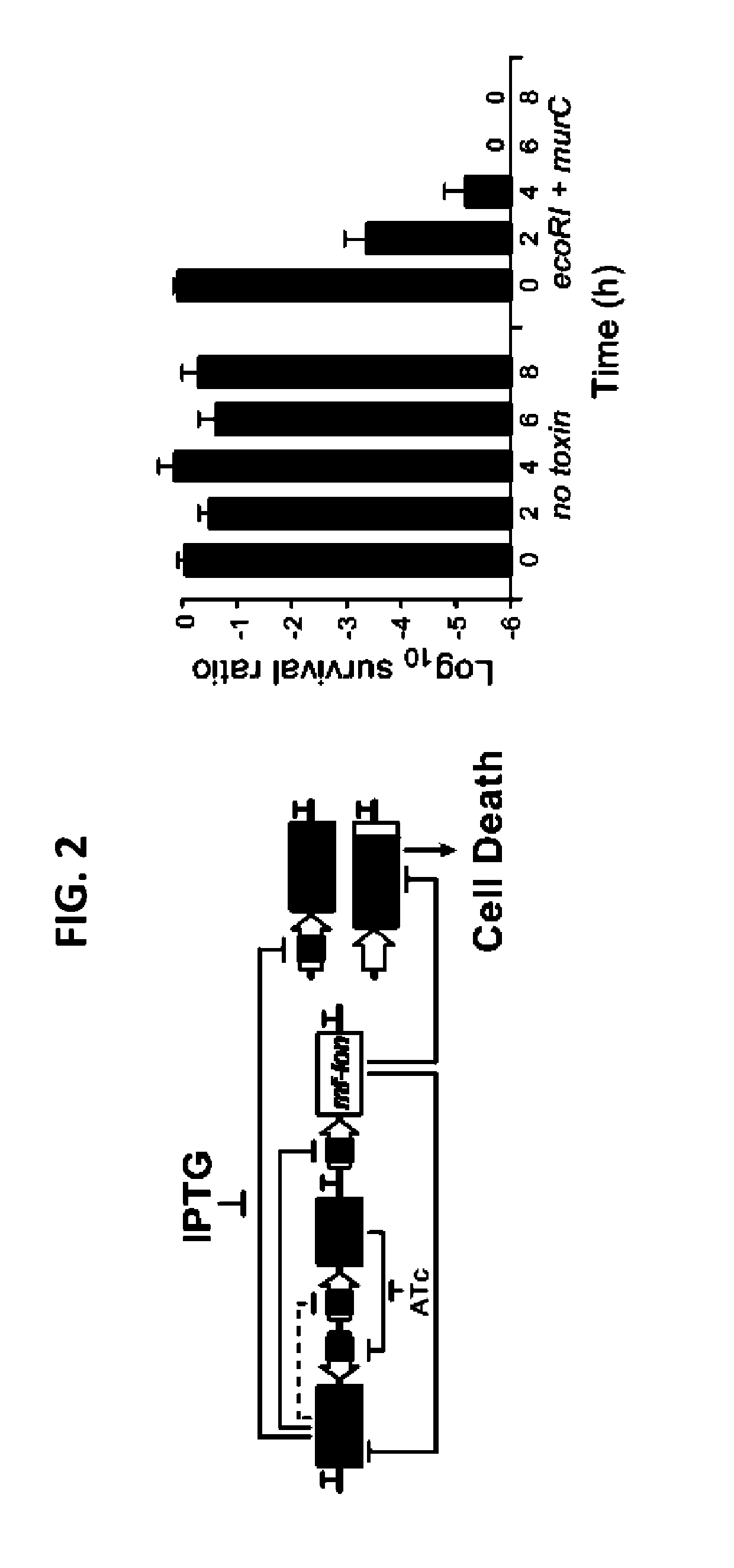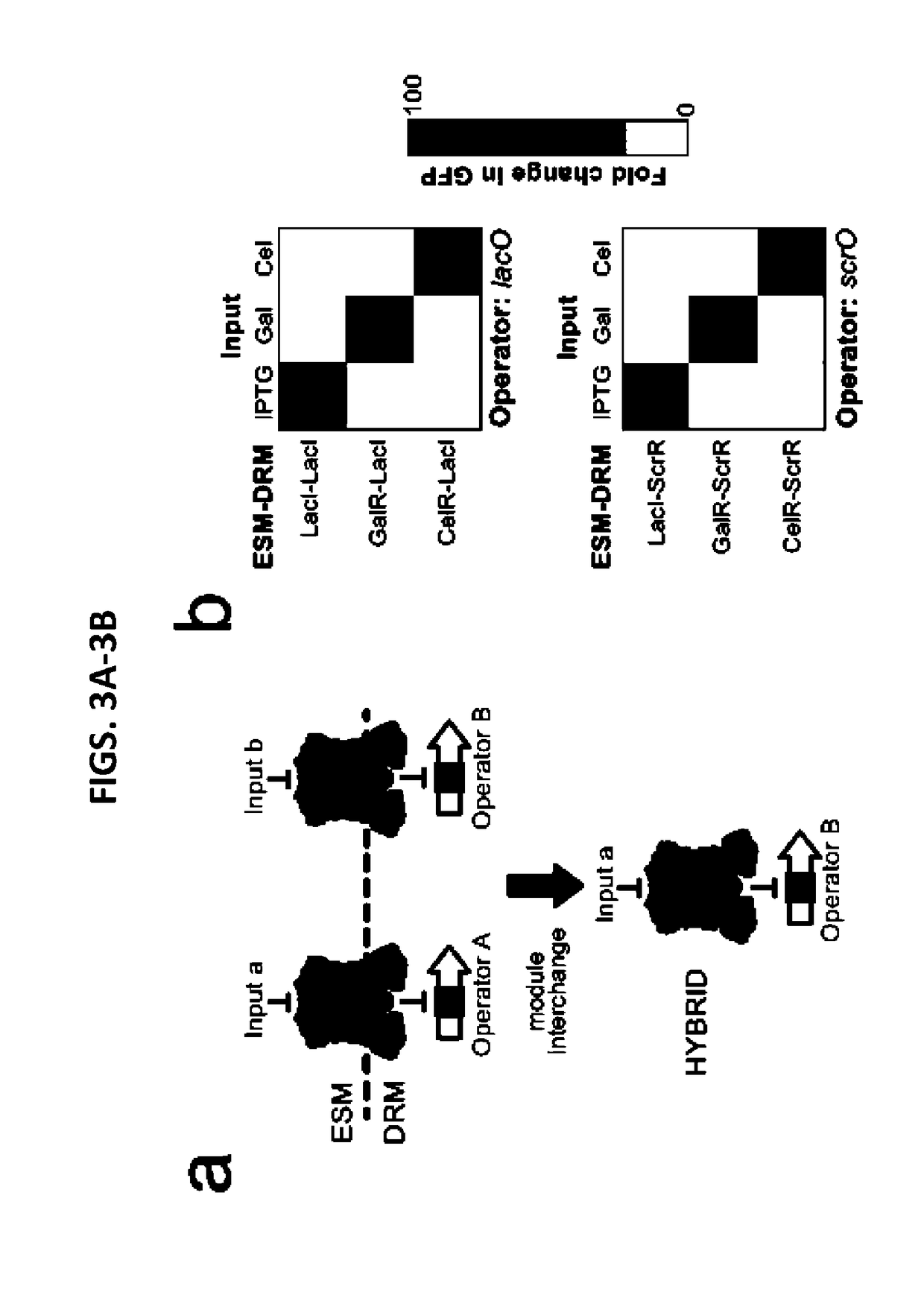Deadman and passcode microbial kill switches
a technology of microbial kill switch and passcode, applied in the field of genetically engineered biological circuit, can solve the problems of limiting the application of biotherapeutic microbes, relying on extensive genome-wide engineering, and hampered traditional metabolic auxotrophy strains, and achieves robust target cell killing.
- Summary
- Abstract
- Description
- Claims
- Application Information
AI Technical Summary
Benefits of technology
Problems solved by technology
Method used
Image
Examples
example 1
Methods
[0104]Strains. E. coli MG1655ΔlacI was the parental strain for all circuit characterization and was created through P1 phage transduction of lack::kanR from the Keio collection43 into E. coli MG1655 (ATCC 47076). Flp recombinase, expressed on pCP20, was used to remove the kanR cassette44. To construct E. coli strains containing mf-Lon recognition tags on the essential genes dxs, cysS,fldA, plsB or murC, the pdt#1 mf-Lon recognition tag from each corresponding gene in the EPD library20 was transferred to MG1655ΔlacI by P1 phage transduction and the kanR cassette was removed as above. P1 phage transduction was used to convert E. coli MDS42pdu11 (Scarab Genomics) for use in the Passcode switch analysis. Specifically, lack: kanR and recA::kanR deletions from the Keio collection16 and murC-pdt#1 from the EPD library17 were independently transferred to MDS42pdu by P1 phage transduction, and the accompanying kanamycin cassettes were removed by FlpE-mediated excision using pECA102.
[0...
example 2
Methods
[0158]Analysis of protein sequences and crystal structures. ClustalW212 was used for protein sequence alignment of GalS, GalR, AscG, RbsR, PurR, GntR, LacI, and MalI from E. coli; Cc1R from T fusca; ScrR from V. alginolyticus (ScrR-V); and ScrR from K. pneumonia (ScrR-K). Protein crystal structure analysis was performed with PyMol 1.5.× using Protein Data Bank (PDB) entries 1EFA, 1LBG, 1LBI, 1LBH, 1QPZ, and 1TLF5-7,13,14.
[0159]Strain construction. E. coli MG1655ΔlacI and E. coli MG1655Pro10,15 were used for Deadman and Passcode switch construction. E. coli MG1655ΔlacI was used to perform functional analysis of hybrid TFs as shown in FIGS. 15-17. In this strain, transcription from the pLtetO-1 promoter driving TF expression is constitutive because it does not contain tetR. E. coli MG1655Pro, which produces high levels of LacI and TetR15, was used in hybrid TF analysis when LacI regulation ofpLlacO-I was a desired feature (FIGS. 18-19). In these assays, the TetR inhibitor anhyd...
PUM
| Property | Measurement | Unit |
|---|---|---|
| emission wavelengths | aaaaa | aaaaa |
| emission wavelengths | aaaaa | aaaaa |
| nucleic acid | aaaaa | aaaaa |
Abstract
Description
Claims
Application Information
 Login to View More
Login to View More - R&D
- Intellectual Property
- Life Sciences
- Materials
- Tech Scout
- Unparalleled Data Quality
- Higher Quality Content
- 60% Fewer Hallucinations
Browse by: Latest US Patents, China's latest patents, Technical Efficacy Thesaurus, Application Domain, Technology Topic, Popular Technical Reports.
© 2025 PatSnap. All rights reserved.Legal|Privacy policy|Modern Slavery Act Transparency Statement|Sitemap|About US| Contact US: help@patsnap.com



